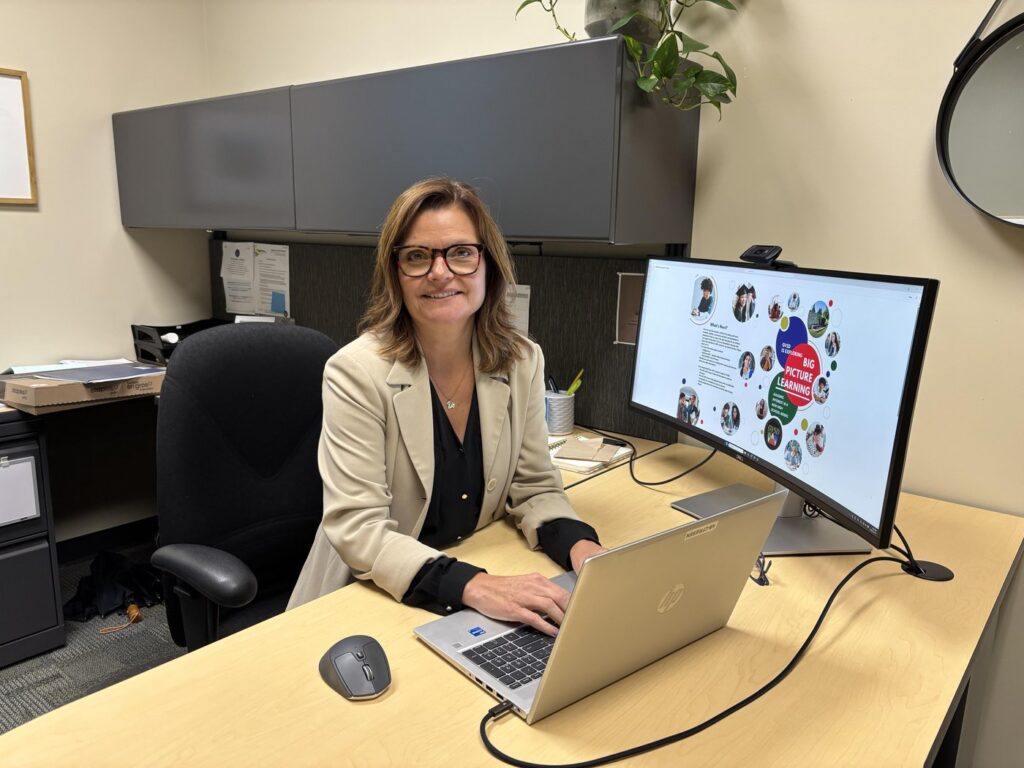There’s a quiet revolution being whispered into the hallways of Garden Valley School Division. This one begins with a simple question: what if high school didn’t have to look the way it always has?
Carrie Friesen, working on behalf of the division and Superintendent Dan Ward, is leading a feasibility study into launching a Big Picture Learning school, a small, community-rooted, student-centred model that flips traditional education on its head.
In most high schools, the day is measured in bells. Students move like clock hands from room to room, their learning neatly divided into units and credits. But under the Big Picture Learning model, the walls between “school” and “the real world” become porous.
“You’re in your advisory group three days a week,” Friesen explains, “and the other two days you’re out there. In the community. With people who are actually doing the work.”

The model is already being used in five Manitoba schools, primarily in urban divisions like Seven Oaks School Division. Friesen believes it could thrive in a rural context, too, precisely because the area is rich with entrepreneurs, trades, farms, and family businesses. The idea is to harness those resources, not as a field trip, but as part of the actual school day.
This is not a hypothetical exercise. It’s about a grade 9 student spending Wednesdays learning from a welder down the road. It’s about a shy grade 11 discovering a knack for CNC machining in a local factory. It’s about a future entrepreneur learning how to run a business before they even get a diploma.
“For anybody, but not for everybody”
Friesen is borrowing a line from Seven Oaks Met School principal: “We’re for anybody, but not for everybody.”
“This isn’t about replacing traditional high school,” Friesen stresses. “It’s about offering another door. A door for the kid who loves learning but hates rows of desks. A door for the student who wants to explore before spending thousands on a program they might not love. A door for the dreamer, the tinkerer, the entrepreneur.”
Each grade would have just 30 students, two groups of 15. No massive hallways crowded with hundreds of ninth-graders. No one lost in the shuffle. “You can’t disappear here,” she says. “You’re known, by name, by story, by interest.”
Big Picture Learning schools don’t throw out the curriculum. Students still earn regular Manitoba credits, write provincial exams, and graduate with the same diploma as their peers. But how they get there looks different.
Instead of fixed timetables, students build personalized learning plans tied to their interests. A student intrigued by fashion might intern with a local seamstress. Someone curious about environmental science might partner with the nearby research station.
Instead of waiting until Grade 12 to “figure it out,” they start experimenting in Grade 9. Success is measured not just by tests, but by exhibitions and portfolios.
Friesen has visited several of these schools already. “I’ve sat in their classrooms, joined their activities,” she says. “You can read about this model all day. But until you see a student explaining their internship at a local company with pride and confidence, you don’t feel it.”
In Winkler and the surrounding area, the potential isn’t theoretical. It’s structural. The region is a web of small businesses, ag operations, manufacturers, and skilled trades. In other words: an ideal laboratory for applied learning.
“If a student can’t find their dream job here,” Friesen says, “they can at least find a stepping stone.”
There’s another, quieter goal too: retention. By weaving students into the fabric of the community during their teenage years, the hope is they’ll be more likely to stay, to grow, work, and build their lives here.
This isn’t a done deal. The division has launched a community survey through its website to gauge support. The idea will be presented to the Education Committee next month and to the full school board in December.
If the feedback is positive and the board gives the green light, a pilot program could begin as early as September, likely starting small, with a single grade level.
“We don’t need to build a brand-new school,” Friesen explains. “We can use existing infrastructure. The key is starting slow, doing it right, and making sure it reflects our community.”
Friesen’s excitement is personal. “I have a two-year-old granddaughter,” she says. “I want her to be ready for whatever the world throws at her. And I’m not sure school needs to look the same way it did when I was her age.”
The world students are stepping into is different, faster, messier, more fluid. Jobs change. Careers shift. What doesn’t change is the need for adaptable, self-aware, connected young people.
“Life readiness looks different than it did 10 or 20 years ago,” she says. “This is just one way to help prepare them for that world.”






